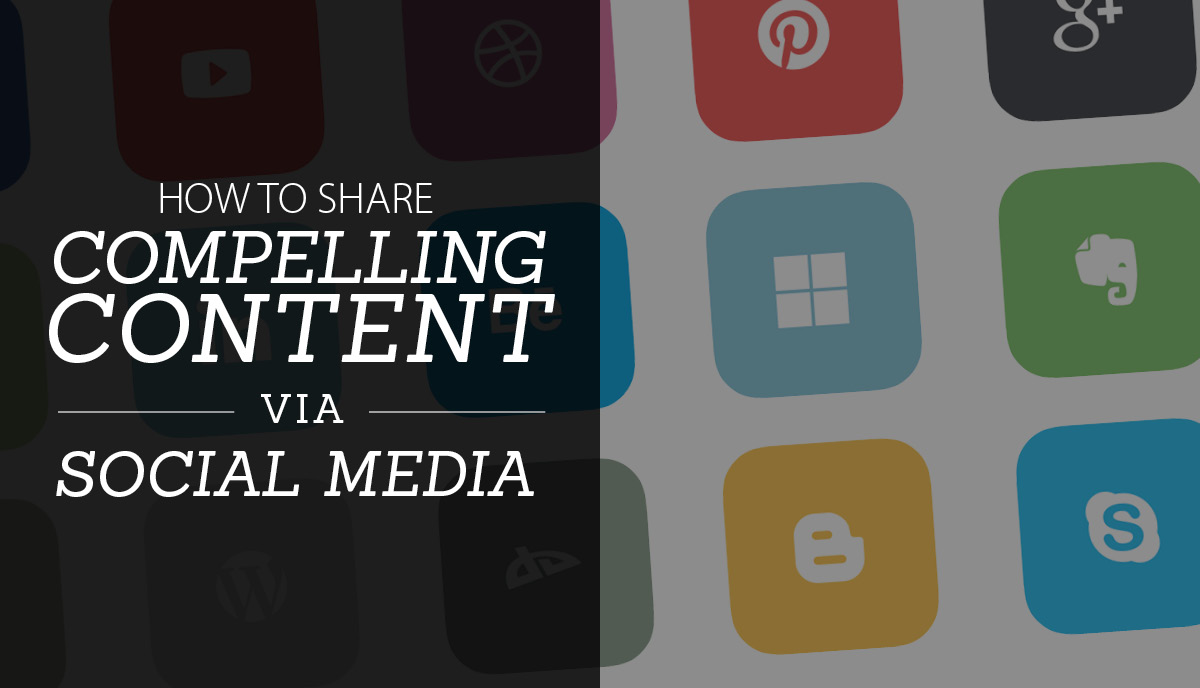Social media is an unequaled tool in terms of content sharing—there is truly no other way to disseminate information as widely or as quickly. Here’s an example: on Thursday evening, February 26, a few Twitter users began to “debate” the color of a particular dress (the answer having to do with what screen you were using to view the photo and how your brain is programmed to see light. By Friday morning, February 27, the topic was trending nationwide, and had been covered by The Independent, Wired, Buzzfeed, Gawker, Access Hollywood, and USA Today, among others. That’s how quickly information spreads via social media.
But there is also so, so much content being shared—think 400 million Tweets and 3.5 trillion Facebook posts per day.
If your goal is to connect with your audience, to build brand loyalty, and to position yourself as an authority in your industry—all excellent uses of social media—your first step is to get people’s attention. So how do you ensure that your content stands out among the crowd?
SHARE A HEALTHY MIX OF CONTENT
The fastest way to lose an audience’s attention is to talk only about yourself—a social media account that posts only promos isn’t offering your followers any value. Sharing a combination of interesting industry-related news and projects, user-generated content, RTs and other follower interactions, and long-form content (like this blog post!) along with your promos will entice your audience to stick around long enough for you to market to them.
Some social media experts say the perfect radio is 80% non-promotional content to 20% promotional, some say 1 in 4 Tweets or Facebook posts is your promotional limit—but these are just guidelines. The best way to determine the perfect “formula” for your industry and audience is for you or your social media company to experiment and analyze your results, adjusting as necessary.
STAY ON TOP OF WHAT’S IMPORTANT TO YOUR AUDIENCE
In order to share industry-related content that your audience will care about, you need to keep up with that industry’s news. There are a few easy ways to do this. Google Alerts offers a quick and simple way to set up a notification system for a particular search term; every time a new result for that search term is added to the Google database, the system will shoot you an e-mail. This is great for specific, niche topics (and for keeping up with the coverage of your own company or product), but it won’t work for something broader, like design or technology.
The best way get the top news from those broader fields is actually to use the tools provided by social media. Follow accounts that share the content that interests your audience, keep Twitter lists for specific industries to make browsing easier, and sign up for daily, weekly, or monthly e-newsletters from the best sources. This ensures that you’ll have no trouble finding out what’s going on in your industry on any given day.
PRESENT LINKS IN AN INTRIGUING WAY
One of the most common, yet most easily fixable, mistakes on social media is sharing a piece of external content without including any information about why you decided to post it. Your followers probably won’t share without visiting it first, and with so many posts scrolling past users’ eyes every hour, you need to give them a quick but enticing reason to click your link—and an article title alone won’t do.
Here are a few ways to make your links more interesting:
- Share a particularly snappy or bold quote from the article before the link
- Describe how the article or content affected you (i.e., “this video completely changed the way I think about web design”)
- If it’s a controversial topic, state your stance and invite followers to explain theirs (“Not sure if we agree with this philosophy on photography—but we’d love to hear what you think”)
- Include an image—not only will an image help the piece stand out on the users’ social media feeds, but it can help provide a bit of context for the information presented in the article and make the content more shareable
Paperkite’s designer created this graphic pull quote to share one of our previous blog postson social media.
This is where outsourcing your social media becomes really helpful—professional designers can create polished, brand-appropriate charts, images, and pull quotes that are perfect for social media sharing.
READ EVERYTHING BEFORE YOU POST IT!
This seems like a no-brainer, but actually, studies show that a pretty hefty percentage of social media users Tweet or post content without actually reading it. Reading—or in the case of a video, watching—a piece of content, from beginning to end, is the only way to know if that content is accurate, well-written and professional, relevant to your audience, and if you agree or disagree (and without that knowledge, you can’t possibly share the content in an intriguing way, as above).
Realistically, the best way to keep your feed compelling is to share only the content that was truly interesting to you. Did the article, blog post, or video impart new information? Was the information written or presented in a new or particularly interesting way? Did it change the way you think about something? Were you truly drawn in by the content, and did you read all the way to the end?
Yes, this is time consuming—which is why so many decide to outsource their social media management. But without this crucial step, you’ll just be adding to the chatter.
Are you looking to outsource your social media? We’d love to help. Contact Paperkite today.



